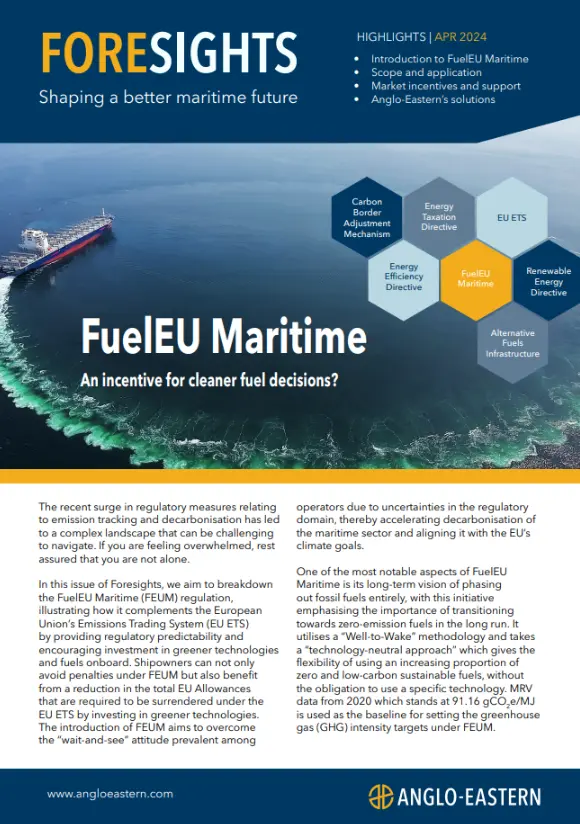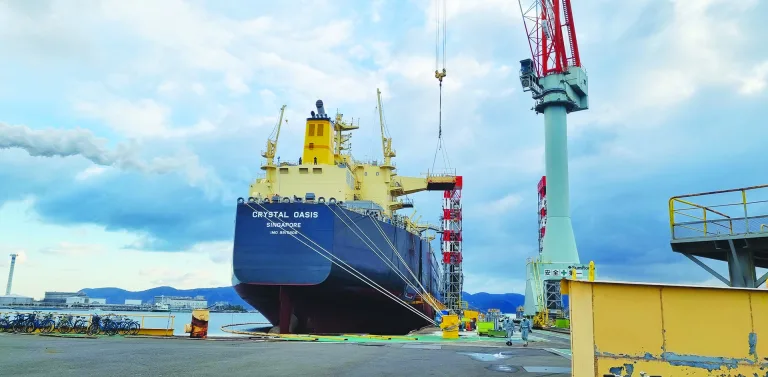The regulatory landscape surrounding emission tracking and decarbonisation is rapidly evolving, presenting challenges for shipowners. If you’re feeling overwhelmed, know that you are not alone. In this issue of Foresights, we explore the FuelEU Maritime (FEUM) regulation, which enhances the European Union’s Emissions Trading System (EU ETS) by providing regulatory predictability and promoting investment in greener technologies and fuels onboard. By embracing these innovations, shipowners can avoid penalties under FEUM while benefiting from reduced EU Allowances required under the EU ETS.
FEUM is designed to address the prevalent “wait-and-see” mindset among operators, accelerating the decarbonisation of the maritime sector and aligning it with EU climate goals. Notably, FEUM envisions a future free from fossil fuels, emphasizing the transition to zero-emission fuels through a flexible, technology-neutral approach. The regulation employs a “Well-to-Wake” methodology and uses 2020 MRV data as a baseline for establishing greenhouse gas intensity targets, ensuring a sustainable path forward in maritime operations.
If you are feeling overwhelmed, rest assured that you are not alone. In this issue of Foresights, we aim to breakdown the FuelEU Maritime (FEUM) regulation, illustrating how it complements the European Union’s Emissions Trading System (EU ETS) by providing regulatory predictability and encouraging investment in greener technologies and fuels onboard.










